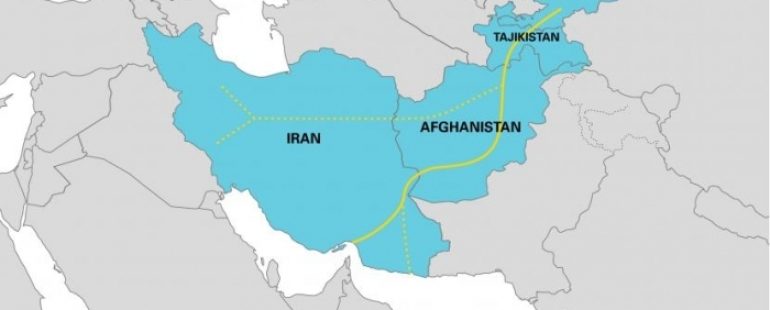
Afghanistan, a landlocked country in South Asia, has faced significant challenges in terms of infrastructure and connectivity over the decades. Given its strategic location bordering several countries, including Pakistan, Iran, and China, the development of transit routes is crucial for its economic growth, trade expansion, and overall development. Iran, sharing a long border with Afghanistan, plays a vital role as a transit country, providing access to international markets and facilitating trade.
This article explores the various aspects of international transport to Afghanistan via Iran, including trade pathways, infrastructure, logistics challenges, and the implications of political dynamics on trade.
Geographic and Economic Context
Afghanistan
Afghanistan’s economy is primarily based on agriculture, mining, and remittances, with trade being crucial for economic stability. The country relies heavily on imports for basic goods and services, including food, fuel, and manufactured products. The reconstruction efforts following decades of conflict have seen some improvement in infrastructure, but significant challenges remain, especially in terms of transport networks.
Iran
Iran, positioned to the west of Afghanistan, has robust infrastructure and established transport networks, including roads, railways, and ports. The country has been instrumental in facilitating trade with Afghanistan, leveraging its geographic advantages. The two countries share a border of approximately 911 kilometers (566 miles) that has historically served as a trading route despite periods of tension.
Key Transportation Routes
Road Transport
- The Delaram-Zaranj Highway: Completed in 2009, this highway connects Afghanistan with Iran, starting from the Iranian town of Delaram and ending at Zaranj in Afghanistan. It is a crucial artery for trade, allowing for the direct transport of goods from the Iranian port of Chabahar to Afghanistan. This route is particularly significant since it helps bypass the longer, more complicated routes through Pakistan.
- The Herat-Khaf Railway Project: This railway, connecting the Iranian town of Khaf to Herat in Afghanistan, was inaugurated in 2022 and represents a pivotal development in rail connectivity. It significantly enhances the capacity for transporting goods between the two nations, reducing costs and transit times.
- Regional Connectivity Linkages: Beyond the mentioned routes, numerous smaller roads and pathways facilitate trade at various border crossings, such as the Islam Qala and Milak borders. These points are crucial for traditional truck-based transport of goods.
Air Transport
Air freight is another critical avenue for transporting goods, particularly perishable items and high-value goods. Major Afghan cities, including Kabul and Herat, have airports that handle international flights, although the capacity and frequency of these flights may vary.
Furthermore, Iran’s airports, such as those in Mashhad, Tehran, and Isfahan, serve as transit points for goods headed to Afghanistan.
Maritime Transport
Iran’s southern ports, notably Chabahar, have become increasingly important for international trade with Afghanistan. Chabahar, strategically located on the Gulf of Oman, offers direct access to international waters and serves as a free trade zone, attracting investments and facilitating the transshipment of goods to Afghanistan.
Logistics Challenges
While the transportation infrastructure between Iran and Afghanistan has improved, several logistical challenges persist:
- Security Concerns: The ongoing instability within Afghanistan poses risks to transport routes. Issues related to conflict, criminal activity, and changes in political power can disrupt logistical operations.
- Customs and Regulatory Barriers: Inefficient customs processes, bureaucratic delays, and regulatory barriers can hinder the smooth transit of goods. Trade agreements and border protocols need to be streamlined to facilitate better trade flow.
- Road Quality and Maintenance: Some transport routes within Afghanistan remain poorly maintained, leading to delays and increased transportation costs. Investment in road infrastructure is necessary to enhance capacity and safety.
Political Dynamics and Trade Relations
The political landscape in both Afghanistan and Iran significantly influences trade relations. The change in Afghanistan’s governance after the Taliban takeover in August 2021 raised concerns about stability, approaching trade dynamics with caution. International sanctions on Iran, primarily led by the United States, have complicated trade relations. However, both countries have attempted to strengthen their economic ties, seeing mutual benefits in collaboration.
Iran has sought to leverage its position as a transit hub, promoting trade agreements with neighboring countries to ensure Afghanistan’s access to international markets while enhancing its economic standing. Conversely, Afghanistan’s reliance on Iranian goods and services reflects a significant interdependence that impacts regional stability and economic prospects.
Conclusion
International transport to Afghanistan via Iran represents a vital corridor for trade and economic development. As Afghanistan seeks to enhance its connectivity and trade capabilities, Iran’s geographical proximity, established infrastructure, and expanding investments play a pivotal role in shaping the future of Afghan trade. While challenges persist, including security issues, logistical hurdles, and political dynamics, strengthening these transport links could significantly contribute to the stability and growth of Afghanistan’s economy in the long term.
Continued cooperation and investment in infrastructure improvements, along with streamlined regulatory processes, will be essential to realize the full potential of this critical trade route. Ultimately, robust international transport networks can help pave the way for prosperous and sustainable development in Afghanistan, creating a pathway for greater economic integration with its neighbors and the broader region.

Comments (No Responses )
No comments yet.